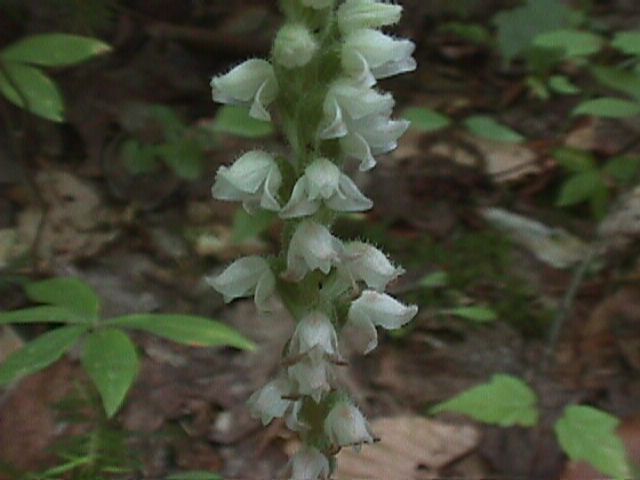


Flowers - Small, greenish white, the lip pocket-shaped, borne on one side of a bracted spike 5 to 10 in. high, from a fleshy, thick, fibrous root. Leaves: From the base, tufted, or ascending the stem on one side for a few inches, 1/2 in. to over 1 in. long, ovate, the silvery-white veins forming a network, or leaf blotched with white.Preferred Habitat - Woods, especially under evergreens.
Flowering Season - July - August.
Distribution - Colorado eastward to the Atlantic, from Nova Scotia to Florida. Europe and Asia.
Tufts of these beautifully marked little leaves
carpeting the ground in the shadow of the hemlocks attract the eye, rather than the spires of insignificantly smallflowers . Whoever wishes to know how the bumblebee ruptures the sensitive membrane within the tiny blossom with her tongue, and draws out the pol-linia that are instantly cemented to it after much the same plan employed by the ladies' tresses, must use a good lens in studying the operation. To the structural botanist the rattlesnake plantains form an interesting connecting link betweenorchids of distinct forms. In them we see a tendency to lengthen the pollen-masses into caudicles as the showy orchis, for example, has done. "Goodyera probably shows us the state of organs in a group of orchids now mostly extinct," says Darwin; "but the parents of many living descendants."It has been said that the Indians use this plant to cure bites of the rattlesnake; that they will handle the deadly creature without fear if some of these leaves are near at hand - in fact, a good deal is said about Indians by pale-faces that makes even the stolid red man smile when confronted with the white man's tales about him.